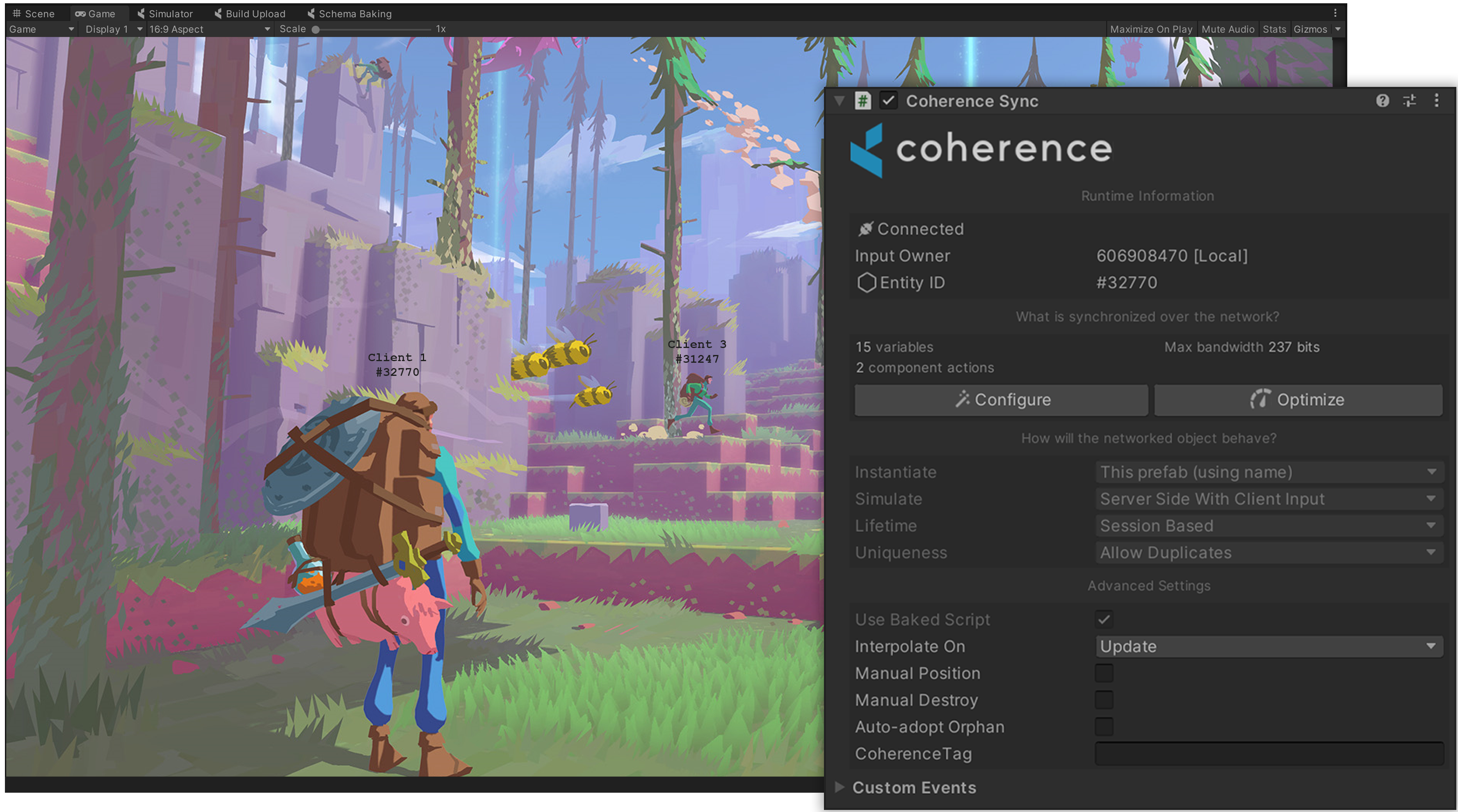Our tech is being used by games/studios/publishers like Vampire Survivors (poncle), Lost Skies (Bossa Games), LEGO, Devolver.
He’re a video of Dino Patti and myself talking about the vision of the company, as well as some of the new features we released with version 1.0 of the tech.
One of the key features of coherence is its ease of use. In this video, I demonstrate how quickly you can add multiplayer to a single-player sample game.
And here is a post I wrote a few years back when we were starting out.
Democratizing multiplayer with coherence
The multiplayer space is currently dominated by big studios with big budgets. Top titles are becoming services, while single-player campaigns are being pushed into the background.
With increasing access to high bandwidth, powerful devices and cloud technology, the number of potential players is higher than ever — but so is the demand for variety.
High stakes and budgets make big players stick to proven concepts — they avoid taking the kind of creative risks players are hungry for. For that, we need indies.
However, small independent developers mostly steer away from online multiplayer. The technical barrier to entry is still high, and hard limitations on the server side restrict the kinds of games that can be created.
The Value of Democratizing Development
Growing up as a teenager in the demoscene, I developed a deep love for low-level optimization and coding systems from the ground up. I got to hang out with elite coders and understand every single detail of what makes graphics and games tick.
But I soon realized that what drives me the most is the end product — and building amazing things is as much a creative endeavor as it is technical.
When Unity launched in 2005, a lot of us were building our own game engines. It was almost a matter of pride, but I am glad I swallowed mine and switched over. Being able to collaborate with artists and sound designers in a single tool everybody understood was a game changer. Unity soon empowered many non-coders to make games on their own, drawing inspiration from new and diverse sources.
Incidentally (or not?), the first touch-screen hits were not ports of big budget games. They were independent creations that reached millions and gave rise to a whole new set of big players.
What About Multiplayer?
We have gone through many iterations of online play: from asynchronous games like Farmville to small scale real-time to turn-based games and MMO’s.
No matter the type, making online games is still not easy. A non-coder can’t really make a prototype on their own without a lot of help from others. Game jams mostly produce single-player or single-screen experiences — despite the fact that there is so much inherent value in playing with others.
We also now have mature cloud technology that can help dissolve traditional scaling barriers and let millions of players interact with the same world simultaneously.
It’s the perfect time to take the next step.
Leveling the Playing Field
We need an open, accessible and democratized process for making and playing connected games. Developers of any size should be able to quickly iterate design ideas and let whatever number of players access them on any device.
We need a platform that doesn’t scare developers, but inspires them to think bigger.
A single person making a huge open world with millions of players and simulated entities that live on their own? Why not.
There is so much to be gained by empowering people to take creative risks and see these play out on a large scale. New genres, new business models, new kinds of digital entertainment.
An Open Platform for Connected Worlds
I am part of a group of game developers and tech entrepreneurs that are extremely passionate about democratizing multiplayer and opening the doors to a new wave of games and experiences.

coherence lets you add multiplayer even without coding skills
We are building coherence — a new open cloud-based platform that lets you easily build scalable and persistent virtual worlds.
From day one, coherence’s top priority is giving creators of any experience level access to multiplayer game development.
The engine is built from the ground up to prioritize performance as well as cost-effective bandwidth and CPU usage. Scaling and transitioning across large clusters of servers is handled seamlessly and automatically.
You can make anything from two-player games to large-scale virtual worlds. The will integrate with major game engines (starting with Unity) and handle everything from visual data modeling, simulations, analytics, local testing to deploying your game into the cloud. Developers who want to dive deeper can use the SDK or look under the hood.
Running a connected game in the local network or at a small scale doesn’t cost anything— we want coherence to be a natural choice not only for super ambitious projects but also for game jams and experiments.
Follow us on Twitter and Facebook for updates.

— Tadej